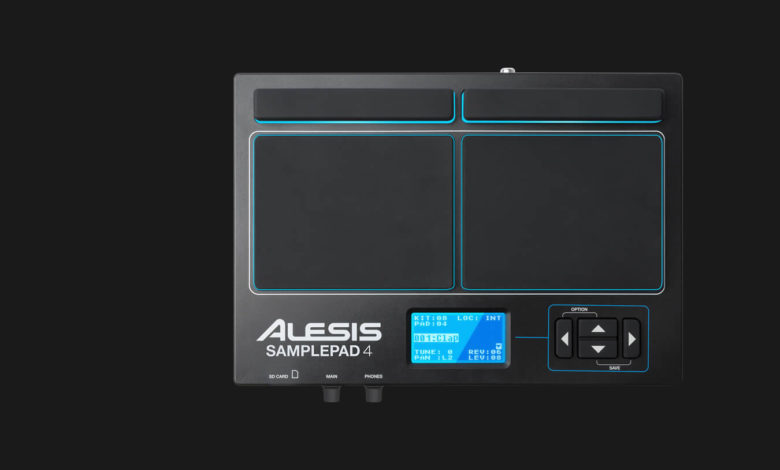
We may earn a commission from the affiliate links on this site. Learn more›
Not too long ago I began wondering if my sample pad setup was a bit unnecessary. See, I use a laptop computer to run our backing tracks alongside a Roland SPD-SX to trigger the playback.
The problem is, I only end up using four pads on the Roland out of the total nine. I began my journey to see if the Alesis SamplePad 4 would reduce my fingerprint on stage and make it easier night after night.
The Alesis SamplePad 4 is perfect for touring drummers who run backing tracks that don't need access to lots of physically-played samples in a show. Perfect for start and stop.
- Pads: 4
- Storage: 32GB via SD card (not included)
- Function: Triggering, percussion pad
- Sounds: 25
- Capacity: Max 512 sounds per SD card
- Very Affordable
- Perfect for backing tracks
- Outdated
- Cross-talk problems
- Clunky interface
For me, the Alesis SamplePad 4 worked perfectly in my situation. With four pads and a dual-trigger input on the back, I’m able to start, stop, change songs, and trigger samples from my playback rig without wasting pads on my SPD-SX.
The SamplePad 4 is much more affordable and does exactly what I need currently. The only thing I miss from my Roland SPD-SX is MIDI out.
Overview – Alesis SamplePad 4
The SamplePad 4 is essentially the smaller sibling to the larger SamplePad Pro. As the name suggests, you get four sampling pads (two large and two raised skinny bars) to control pre-loaded sounds or user-created sounds. The pad supports an SD card with a maximum capacity of 32GB.
Alesis also recently released a new sample pad, the Strike MultiPad.
Samples are simply dropped on to the SD card from a computer and can be loaded within the user interface on the pad (need to be 16-bit, mono or stereo .wav files!).
Though the pad is relatively small, it’s not so small that you won’t have accuracy when going to hit the four pads. The illuminated pads look great and are especially useful in dark clubs.
This drum pad is perfect for drummers looking to add some element of sampling to their playing or those who need to control a DAW like Ableton Live for backing tracks.
In addition to my need to start playback before each song, I also have two additional trigger pads: one under my hi-hat and one to the right of my floor tom.
I was nervous at first seeing only one trigger in on the back, but it is, in fact, a dual-zone input. A little annoying, but I am able to get both pads working by using a Y-cable.
Speaking of backing tracks, I spent two years trying to figure out the best way to set up a playback rig. It wasn’t until I followed these steps that I was able to be efficient and flawless every night.

Here are the features of the Alesis SamplePad 4:
- Four illuminated, programmable rubber sample pads – endless sampling opportunities
- Accepts SD/SDHC cards up to 32GB – 512 samples per card and up to 89 user kits can be stored
- USB-MIDI output for use with DAW – no internal sampling required, use Ableton Live for example
- Onboard FX – add reverb to your sounds to make them sound huge
Note about line-level signals: You WILL need a stereo passive DI box if you want to use this in a live situation. Many users have complained about output noise and other problems when using the SamplePad 4. This is simply because they are not using a DI box to convert a line-level signal to a balanced signal that a mixing board can use properly.
Internal sounds and I/O
The provided samples included out of the box are pretty mediocre. This is really no issue for me as I have my own collection of samples that I use and I’m mainly using this for MIDI control of Ableton Live.
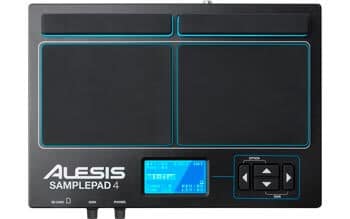
You’ll find kicks, snares, and assorted percussion (shakers, congas, claps, cowbells, etc…) when you fire it up for the first time. Toms and cymbals are not included in the pre-loaded samples. Alesis also has a library of additional free sounds, including hits, loops, and samples, on their website.
Importing your own samples
There are many libraries available on the internet with amazing sounds. A simple Google search will reveal plenty of options for you to choose from (or you can check out my lists of free drum kits or acoustic drum samples).
Importing samples is as simple as dropping them to an SD card and plugging it into your Sample Pad 4. The samples need to be in the root directory of your card.
When a sound is selected on your SD card, you can load it into a specific pad and save a new user kit. It’s a relatively easy process.
Two velocity layers per pad
While this may not be on the level of the Roland V-Drum module, having two velocity layers per pad allows you to play more dynamically with your sounds. If you’re confused by what this means, allow me to explain.
Let’s say you’re importing a snare sample to your sample pad. In terms of dynamics of playing a snare drum, think of two velocity layers as two different volume hits.
You’re able to import a lighter “tap” sample as well as a hard-hitting strike of the drum. You can then adjust the velocity level on the SamplePad 4 to determine when the “crossover” is of which sample to trigger. This is great for percussion samples like congas or bongos.
The ins and outs of the Alesis SamplePad 4
The back of the SamplePad 4 includes a headphone output, a power switch and input, a dual-zone trigger input, main output left right, and a USB output. I’m still wishing they had included traditional MIDI I/O on this unit, but I understand that it’s a bit too small to fit all of that.

In Use
The SamplePad 4 is relatively easy to use and understand. There are four arrows on the right of the instrument that are used to control the parameters of the illuminated display.
You’ll notice the SD card slot, main volume, and headphone volume controls are also on the front panel. The menu system is very easy to follow but does take a little getting used to, as does any electronic interface.
The pad can be played with either sticks or hands, depending on your preference.
As I stated earlier, the SamplePad 4 was perfect for what I needed at the time. The ability to control my playback setup with a small MIDI controller was a must (a huge plus that I was able to connect both of my additional trigger pads, as well).
Now, this isn’t the only sampling pad available. Not too long ago I wrote extensively about the best drum pads on the market (as well as my favorite pick), which you can check out here.
Have you tried out the Alesis SamplePad 4? Let us know your thoughts down in the comments. Thanks for reading.
Images courtesy of Alesis.com
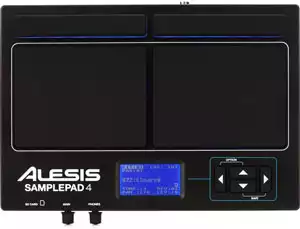

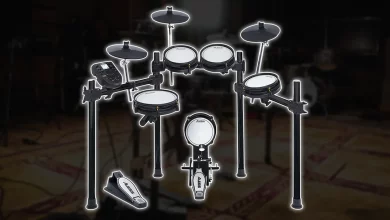
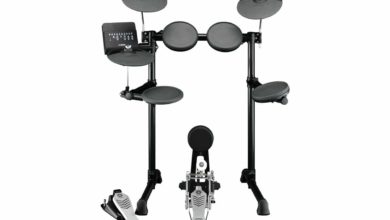
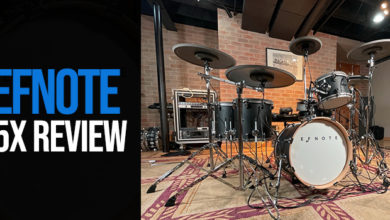
Hi,
Unfortunately there are some Samplepad 4’s which have a sort of 60hz hum cycle loop which can’t be ground lifted by a DI box.
Im seeing plenty of people’s reviews with the same issue..
Any suggestions?
Grts,
T
0
Hi Tato,
I haven’t heard of this issue myself, but I did see on Alesis’s FAQ they mention trying to update the firmware to the most recent version. Have you tried that?
The only other thing I can think of is that the power you are using isn’t “clean.” This is a pretty contentious topic and is one that I am not completely knowledgable on. See this forum thread from gearslutz: https://www.gearslutz.com/board/high-end/412613-clean-power-myth.html
You can try using different power sources to try an isolate the problem. If that isn’t it, I would suggest contacting Alesis support directly.
I wish you luck!
0
Good write up. A good introduction pad for someone starting out. Midi IO would of sold plenty of these units just for people wanting the pads to trigger other gear.
0
Good write up. A good introduction pad for someone starting out. Midi IO would of sold plenty of these units just for people wanting the pads to trigger other gear.
0
Am I able to use a mono DI box if i use only the L/mono out?
0
Yes, that would work perfectly.
0
Also long delay between switching kits should be mentioned (once you have samples on SD)
0
Also to mention is that copying data to/from device using the internal SD Card reader is very slow.
Unfortunately have no dedicated SD Card Reader on my mac.
All in all a great input device for “drummy” things.
0
I just got mine and started using the external trigger last night, i have another Alesis pad I took from a Studio DM10 kit, no matter where I put it, when I hit the snare it goes off, that’s even with me putting the sensitivity to 1 to eliminate crosstalk, i’ll try updating the firmware
0
I tried 2 different units and they both had output noise. The headphone jack did not until the usb was connected. The buzz may be accepted for live but not in a studio.
0